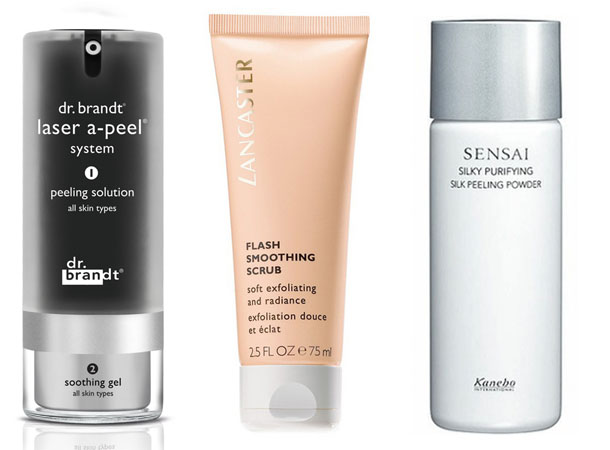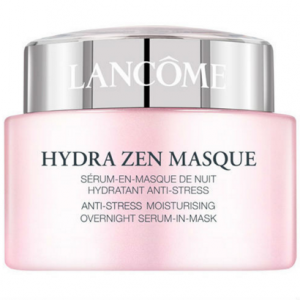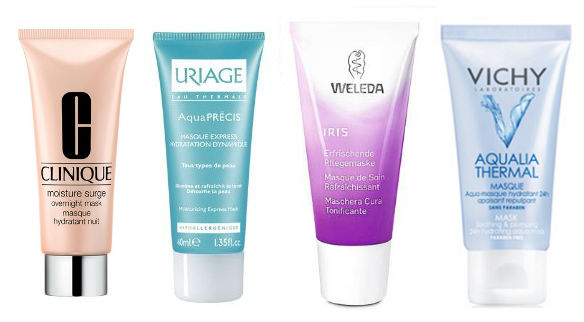Content
- Facial Care
- Normal skin care and cleansing
- Care and cleansing of dry skin
- Oily skin care and cleansing
- Face masks and skin type
The urban environment, deteriorating ecology do not contribute to the good condition of our skin. She needs careful care. Especially in winter, when cold, wind, vitamin deficiency adversely affect our body as a whole and in particular on the skin.
The skin, as we know, is our mantle, a cover that protects us from adverse environmental factors.
Facial Care
The skin needs regular cleansing. Daily on the skin, processes of replacing old, dead cells with young ones occur. On the surface of the skin are cells devoid of protoplasm, nuclei and inclusions filled with keratin. These are horny scales. They peel off, allowing new cells to come in their place. A middle-aged man loses about 600 thousand skin cells every hour. But such self-cleaning is still not enough. Between keratin particles dust, dirt, sebum get stuck. All together forms a dense film, which over time can serve as a nutrient medium for pathogenic bacteria and interferes with normal respiration and moisture exchange of the skin..
Normal skin care and cleansing
Normal skin should be washed twice a day with water, once a day with soap. You can use special foams and creams for washing. The use of scrubs, gommage (from the French gomme – an eraser, dissolves keratin and helps to remove dead cells and impurities, as well as cleansing pores) is allowed 1 time per week. Complete the cleaning by wiping with alcohol-free lotions, preferably fortified or enriched with plant extracts.
Care and cleansing of dry skin
Dry skin does not tolerate washing with water. Therefore, in the arsenal of cleansers for dry skin should be milk and tonic. Milk, as a rule, is enriched with vitamins, extracts of herbs that relieve irritation, oils that protect the lipid layer from destruction. Milk removes decorative cosmetics well enough. A tonic, also enriched with similar substances, completes the cleansing. If waterproof cosmetics were applied to the face, then special lotions with a high oil content are needed for it..
Dry skin scrubs should be used extremely rarely. It is better to use soft peeling compositions with small granules, preferably artificial origin, or soft gommazhi. Use such funds should be no more than once and a week. In winter, dry skin owners should generally abandon the use of aggressive cleansers, as they can damage an already scarce lipid cover. After scrubbing, peeling and irritation may appear on dry skin. To prevent this, you can use the usual ground oatmeal, diluted in boiled water to a state of gruel. Such super soft peeling will not harm the skin.
Oily skin care and cleansing
Oily skin loves water and aggressive cleansers. Owners of this type of skin would like to remove a thick coating of fat mixed with cosmetics and dust from their skin. This natural desire must be realized by washing 2 times a day with special gels that deeply cleanse the skin. Soap is better not to use, because, having an alkaline reaction, it can create a favorable environment on oily skin for the habitat and reproduction of pathogens. Foams and gels for washing oily skin most often have a pH – neutral environment or, better, acidic.
Scrubs and peels are best used 1-2 times a week, with very high fat content, you can also 3 times a week. But the use of scrubs is contraindicated in the presence of purulent inflammatory elements on the skin. Using scrubs in this case, you run the risk of “spreading” infectious microorganisms throughout the face and provoking inflammation in other places. Complete the cleansing with the help of a lotion, which will help restore the necessary acid defense on the skin and will not enhance sebum secretion.
Very adversely affect oily skin alcohol solutions. Yes, for a while, a feeling of cleanliness, breathing and smoothness of the skin is created, but such a cleansing immediately starts the process of enhanced sebum secretion, which can exceed the initial level of sebum. This forms a constant problem with the skin of the face which only strengthens, but does not weaken, the oily skin. Alcohol lotions are designed for problem skin with acne inflammatory elements. They must be applied precisely, directly on the inflamed elements, and not wipe the entire surface of the skin.
Mixed skin should be cleaned carefully, finding a compromise between oily and dry areas. Milk and cream are best suited for this, but after this, areas with high fat content should be treated with oily skin gel and rinsed with water. After that, if necessary, peel only oily areas, carefully trying not to touch the dry ones. Then use lotions separately for different skin areas..
Face masks and skin type
So our skin is cleansed. You can proceed to the next stage of care – masks. Masks are also divided according to the type of skin and the tasks that are set, winter time should pay more attention to nourishing and fortified masks.

Dry skin
For dry skin, nutritious, saturated masks should be applied 2 times a week. And preferably 1-2 times fortified. Dry skin likes extracts of wheat germ, beans, soy, agave oil, avocado, almond and peach lecithin and spermaceti. Masks are applied: cleaned face and neck for 20-30 minutes, after which they are removed with water, lotion or are not washed off. Indelible masks are called cream mask.
Dry skin requires regular hydration. In winter, you should not forget about him, either. overdried air in heated rooms can be harmful to the skin. 1-2 times a month, the nourishing mask should be replaced with a moisturizing mask. And it is always necessary to have a spray with spring water or thermal water for periodic irrigation of the skin, especially when you are in front of a computer or in a heated room for a long time. However, in winter, do not irrigate the skin before going outside.
Oily skin
Oily skin suffers less in winter. He even feels better than on warm summer days. However, she also needs regular care.
Masks for oily skin in winter are also nutrients enriched with vitamins and light oils, better than essential ones. Such masks should be done 1 time per week and with the same frequency – fortified. However, if for dry skin masks are most often creamy, rich texture, then for oily skin the texture should be soft, emulsion or gel. Well oily skin tolerates film masks. I especially want to draw attention to the fact that oily skin loves extracts of birch buds, cucumber, lavender, essential oils of tea derren, rosemary, pine extracts and propolis.
For owners of problematic skin with acne elements, masks with clays – white or blue – remain mandatory. These are wonderful remedies for healing oily, porous and inflamed skin. Such masks should be done 1 time per week in the winter and 2 times a week in the summer.
The general rule remains the mandatory rubbing of the skin with lotion after removing the masks.
Normal skin
Normal skin needs alternating nutrition, saturation with vitamins and moisturizing 1-2 times a week.
Mixed skin, as you probably already understood, requires a selective approach. Masks for oily skin are superimposed on oily areas, and on dry – for dry.
A little trick: the best time for masks and generally a day of cosmetic care at home – from 21 to 23 hours. It is proved that just at this time our skin has the highest absorption potential of the substances applied to it. And one more thing: when you made the mask, try to lie down, close your eyes, turn on calm music and just dream about something nice. If you can’t lie down, then try to take a comfortable relaxed pose and also delve into pleasant dreams. Positive emotional experiences can enhance the absorption of nutrients by the skin by as much as 7%, and this, believe me, is quite a lot.
Skin prone to irritation and skin with dilated vessels
Skin prone to irritation and skin with dilated vessels. In winter, these two types of skin are very affected by extremes in temperature and humidity. As a rule, in the evening the skin becomes painfully irritated, flaky and sensitive. Any touch on her becomes unpleasant. Such skin should be given rest under a soothing mask every night. Arriving home and removing makeup, put a gauze napkin dipped in chamomile broth on your face. The temperature of this mask should be slightly higher than body temperature. The napkin must be kept on the face until it cools. This procedure can be repeated 2-3 times. After that, you can proceed to normal care..













